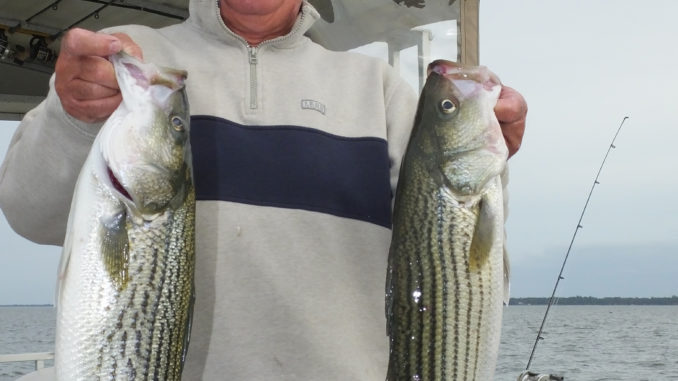
Lake Moultrie and Lake Marion show off their best side as keeper season for striped bass cranks up.
The revived striped bass fishery on the Santee Cooper lakes is no secret; many anglers throughout the Carolinas have heard about the strong recovery.
But many probably don’t realize the extent of the recovery. During October and November, the fishing reaches a fervor not enjoyed since the long ago “good ol’ days.”
“I haven’t seen striper fishing this consistently good in a long, long time,” said guide Leroy Suggs, who had just returned from only a few hours on the water with a party of four and a cooler full of stripers.
“Today. we’ve got the limit of 12 keeper stripers, three per person,” he said. “But what’s really great is that we caught and released a triple-digit number of stripers. It’s a cloudy day, ideal for topwater schooling and live bait fishing. But even on clear days, we’re catching 40 to 60 and sometimes more per trip. And we’re boating more keepers than in a long time.”
Suggs, who has been guiding since 1983, works out of Blacks Camp on the Diversion Canal between Lake Marion and Lake Moultrie and has long specialized in striper fishing. He’s fished these lakes through the good, bad and now good times again. He’s confident the fishery is going to continue to improve and 2017 should be as good as or better than last year.
To consistently catch fish, he’s developed a plan that allows him to catch them even when weather or water conditions are not ideal.
“Regardless of how many fish are in the lakes, I can’t rely on just one technique, such as schooling fish, producing a good day,” he said. “My preparation includes my expecting great topwater schooling action, but also having everything for live-bait action. Weather, water and forage can all create a change in fish behavior, for better or worse. But with live bait I can adapt if the topwater bite is off.”
Suggs said the topwater schooling bite is the most exciting but less dependable of the methods.
“Low-light times, early and late in the day, are prime schooling periods,” he said. “Fish may school anytime of the day, even in clear weather, but cloudy days can create ideal situations where several huge schools of fish are actively feeding at any one time. It’s often a matter of working a school of fish close to the boat. I can compare that to not many years ago when we hoped to just see one school of fish.”
At first light, Suggs is prepared for topwater action, but unless it’s already happening, he’ll drift live herring while scanning for schooling fish, or the tell-tale clusters of gulls diving on forage pushed to the surface by marauding stripers.
Suggs’ live bait tackle is a baitcasting outfit with the reel loaded with 20-pound line and a 3-foot leader of the same line, tied to a No. 1 Eagle claw, wide-gap hook, all under a 2-ounce sinker with swivels on both ends. The small hook enables the bait to be lively and the hook less visible.
“The small hook impacts how many fish we hook, and the heavy sinker helps keep the line vertical while drifting,” he said. “I’ll fish an area where I mark both forage and stripers on the graph. The fish will often be scattered early in the morning, so I don’t have to find a school of tightly bunched fish. We can drift a large area and consistently catch stripers. The depth I fish will vary depending on the water depth, but we may catch them from 12 feet down to 25 feet or deeper. I’ll drop the herring just at or above the depth the graph marks the fish.”
Another veteran Santee Cooper guide is Linwood Thornhill, who said late October and November is prime time for stripers.
“The weather and water is cooler, and the larger stripers seem to get considerably more active,” he said. “Schooling action is so good on some days I can see birds diving on bait in almost any direction. The top-end size of monster stripers is not like it used to be in the heyday, but the good ol’ days in terms of exciting fishing are here and now. And it’s still getting better.”
Thornhill works live bait as well as schooling fish, but when schooling fish action goes live, he’s on the chase.
“Morning, evening or any time of day, once it starts, we’re likely to have a good period of action before it slows,” Thornhill said. “When one school starts working, odds are very good (that) will others. I’ll go to the first one I see, but I like to keep my options open. Some striper schools will have more big fish than others, with no reduction in numbers of fish. I’ll move around to upgrade the fishing for size or numbers.”
Thornhill also fishes out of Blacks Camp, giving him great access to Lake Marion and Lake Moultrie.
“Both lakes provide sensational fishing, but as the water temperature drops in late November and into December, I think bigger fish are found near the Pinopolis Dam on Lake Moultrie,” he said, “because of the influx of menhaden. Stripers treat menhaden as highly preferred forage.”
Thornhill diversifies his lures for schooling stripers because the fish seem to have an ever-changing preference. He uses Rockport Rattler jigs with plastic trailers, as well as 1/2- or 3/4-ounce bucktails. He varies colors until he hits the best pattern, working white/white, chartreuse/chartreuse and mixing jig and trailer colors. He’ll experiment with patterns to determine the best for any given day.
“Although the smaller jigs will produce fish, I sometimes use the heavier lures to fish a bit deeper because the larger, keeper-sized stripers will often be under the surface feeding fish,” Thornhill said.
“I watch for movement of the feeding fish, usually by watching the gulls, as I approach the school. I can often discern the movement direction and will position the boat within casting range, but just in front of the school movement, so we’ll be in fish action longer,” he said. “That keeps me from getting too get close to the fish, and sometimes they end up schooling all around the boat as they pass by. Having targets in every direction is a very good thing as long as fishermen watch out for one another.”
Thornhill said his biggest problem is he often needs to be in multiple places at once with the landing net.
Both Thornhill and Suggs use jigging spoons while fishing live bait or working schooling stripers. Suggs said the spoon of choice is an 1-ounce or slightly heavier flex spoon with a single hook instead of a treble hook.
“This makes it safer with multiple anglers on board and easier to remove the fish and get the lure back in the water,” Suggs said. “The best technique for these often suspended fish is to drop the rig to the bottom and reel it up, similar to power reeling, but a little slower to trigger striper bites as it passes through the strike zone. We can do that while watching the live bait rigs when stripers are not schooling.”
Thornhill added that when schooling stripers are all around the boat, the spoon is a highly effective lure.
“It’s wasted motion and time to make long casts in a close-quarters fishing situation,” he said. “Drop the lure down and reel and it will likely get slammed.”
A lot of action occurs throughout Lake Moultrie, but the lower end of Lake Marion produces exceptionally good fall striper fishing, and guide Alan Spence said he targets them on the lower end of Lake Marion.
“The cooler weather (into) November seems to enhance the schooling action, and typically a lot of gulls are on the lower end of Lake Marion, making is easier to spot schooling action,” Spence said. “It’s a good situation for numbers of fish and bigger fish. I’ll be ready for schooling action using artificials such as bucktails and topwater lures, as well as live bait for deeper fish suspended in large schools.
“We’ll frequently find a big school of fish in one small area and can anchor and catch a lot of fish using live bait, either herring or shad,” he said. “Drift-fishing over smaller schools of scattered fish around the creek mouths can produce consistent action. Since we do have areas of standing timber and stumps are just underneath the surface, fishermen need to be careful where they run the boat at high speeds. But we have quite a bit of open water as well. The stripers will follow the shad and the key is to be prepared to take what the stripers give.”
Spence said as the weather cools he’ll often find fish in the larger creeks such as Wyboo and Potato on the lower end of Lake Marion.
If you like getting your string stretched by a striper, get aboard the striper express at Santee Cooper this fall. The fishery seems poised for a breakthrough season. Who knows? Twenty years from now you may be talking about the good ol’ days back in 2017 at Santee Cooper.
DESTINATION INFORMATION
HOW TO GET THERE — I-95, I-26 and US 52 offer good access to Lake Moultrie and Lake Marion through Manning, Moncks Corner and Santee. More than 100 public and private boat-access areas are available. Visit www.santeecoopercountry.org/lakeside-facilities.html.
WHEN TO GO — October and November are great months to catch stripers on the Santee Cooper lakes, with the action probably peaking in November.
SANTEE REGS — Striped bass cannot be creeled between June 1 and Sept. 30 on the entire Santee Cooper system. They may be kept from Oct. 1-May 31, three fish per day, with a 26-inch size minimum.
BEST TECHNIQUES — Topwater action is at its best in the fall. Look for diving gulls and other birds to find school. Dropping live herring, shad or menhaden into schools is extremely productive, as is jigging spoons, bucktails or jigs with trailers vertically through schools.
FISHING INFO/GUIDES — Leroy Suggs, 910-995-1168; Linwood Thornhill, 843-351-4238; Alan Spence, 803-478-5029. See also Guides and Charters in Classifieds.
ACCOMMODATIONS — Black’s Camp, 843-753-2231, www.blackscamp.com; Santee Cooper Country, www.santeecoopercountry.org; Clarendon County Chamber of Commerce, 803-435-4405, www.clarendoncounty.com.
MAPS — Kingfisher Maps, 800-326-0257, www.kfmaps.com; Navionics, www.navionics.com; DeLorme’s S.C. Atlas & Gazetteer, 207-846-7000, www.delorme.com; Atlantic Mapping, www.atlanticmapping.com.

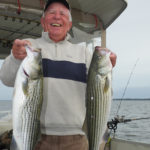
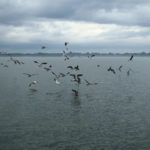
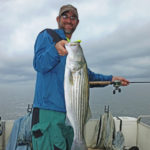
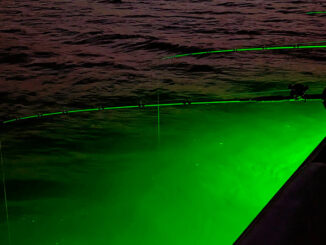
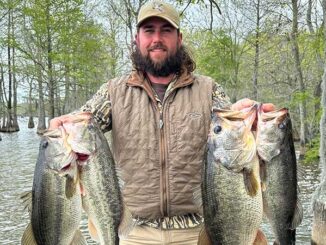


Be the first to comment